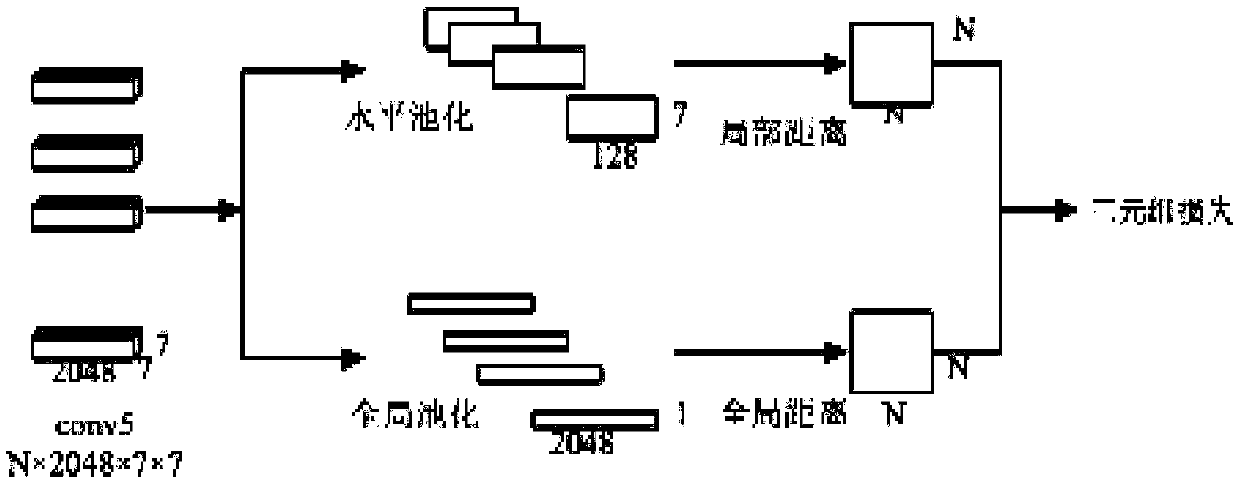Pedestrian re-identification method based on triple convolutional neural network
A convolutional neural network, pedestrian re-identification technology, applied in the field of computer vision, can solve the problems of inability to change the value range, lack of flexibility, mismatching and so on
- Summary
- Abstract
- Description
- Claims
- Application Information
AI Technical Summary
Problems solved by technology
Method used
Image
Examples
Embodiment Construction
[0060] The present invention will be described in detail below in conjunction with the accompanying drawings and specific embodiments.
[0061] The pedestrian re-identification method based on the triple convolutional neural network of the present invention is specifically implemented according to the following steps:
[0062] Step 1. Randomly sample P pedestrians in the pedestrian dataset images, and randomly select K images from each pedestrian to form a mini-batch sample with P×K images;
[0063] Step 2. Input the small batch samples obtained in step 1 into the triple convolutional neural network in turn, and output the global features and local features of each pedestrian image in the small batch samples;
[0064] Step 3. Use the Euclidean distance formula to calculate the distance between the global features of each two pedestrian images in the small batch samples obtained in step 1 and determine the similarity between the global features, and calculate the distance betwe...
PUM
 Login to View More
Login to View More Abstract
Description
Claims
Application Information
 Login to View More
Login to View More - R&D
- Intellectual Property
- Life Sciences
- Materials
- Tech Scout
- Unparalleled Data Quality
- Higher Quality Content
- 60% Fewer Hallucinations
Browse by: Latest US Patents, China's latest patents, Technical Efficacy Thesaurus, Application Domain, Technology Topic, Popular Technical Reports.
© 2025 PatSnap. All rights reserved.Legal|Privacy policy|Modern Slavery Act Transparency Statement|Sitemap|About US| Contact US: help@patsnap.com



